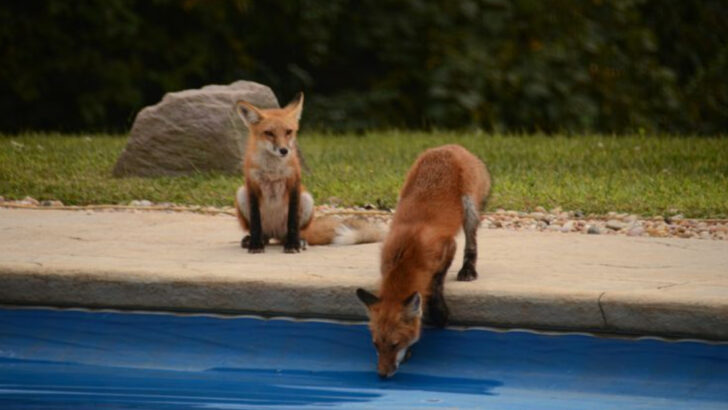Your backyard might be hiding more than just squirrels and songbirds. Across the U.S., wild and dangerous creatures have been creeping into neighborhoods, turning quiet yards into unexpected wildlife encounters.
From venomous snakes coiled in the grass to massive bears rummaging through trash cans, some of these animals are harmless—until they’re not. Others, like mountain lions and alligators, are downright terrifying. And they’re getting closer than ever to human homes.
Why are these animals showing up where we least expect them? And just how dangerous are they?
These 18 shocking backyard visitors prove that sometimes, nature doesn’t stay in the wild—it comes knocking at your door.
Eastern Diamondback Rattlesnake
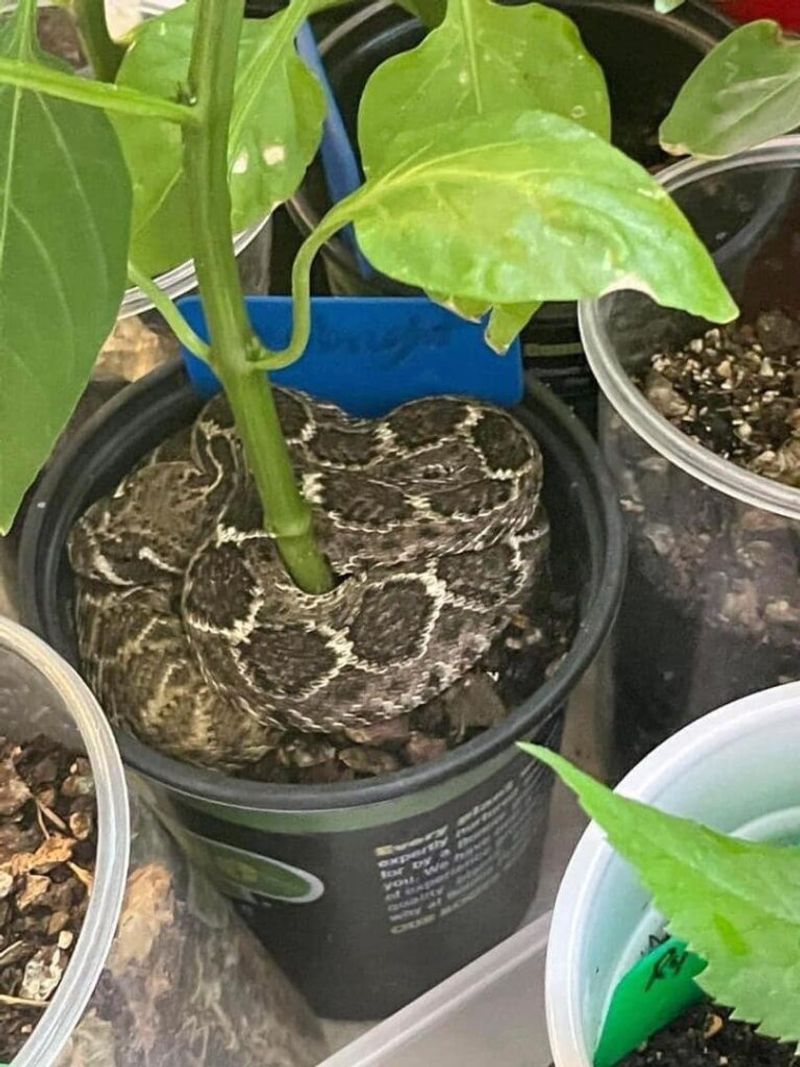
The Eastern Diamondback Rattlesnake is a formidable predator found in southeastern US backyards. With its distinct diamond pattern and menacing rattle, it commands attention. These snakes can reach lengths of up to eight feet. Their venom is potent and can cause serious harm to humans and pets. Typically, they prefer to avoid humans, but if cornered, they will defend themselves.
Homeowners should clear debris and tall grass where these snakes might hide. Wearing boots when walking through potential snake habitat can also prevent accidental encounters. Rattlesnakes play a crucial role in controlling rodent populations.
American Black Bear
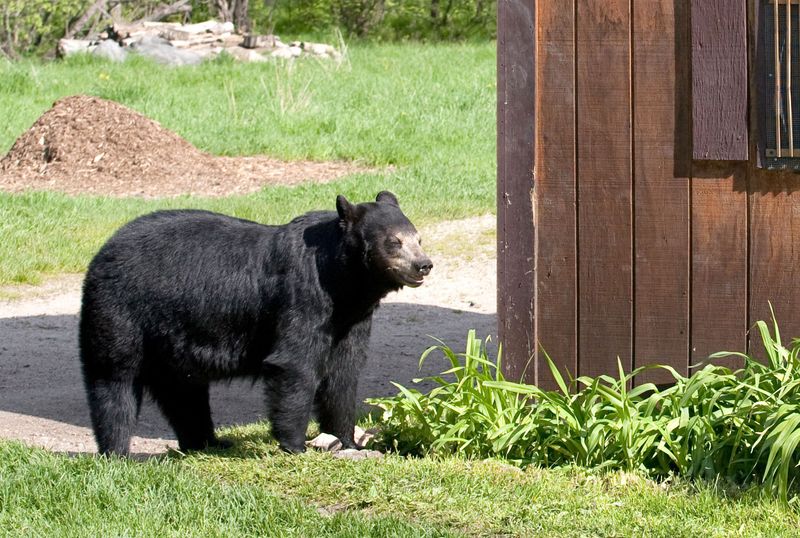
American Black Bears are curious creatures often drawn to backyards by the scent of food. While they are generally not aggressive unless provoked, their size and strength make them dangerous. They can be found in wooded areas across North America. When food sources like bird feeders, pet food, and trash are accessible, they may become repeat visitors.
To discourage them, secure garbage bins and remove food sources. Homeowners should install bear-proof containers and consider electric fencing if living in bear-prone areas. Awareness and caution are key when living near these majestic animals.
Coyote
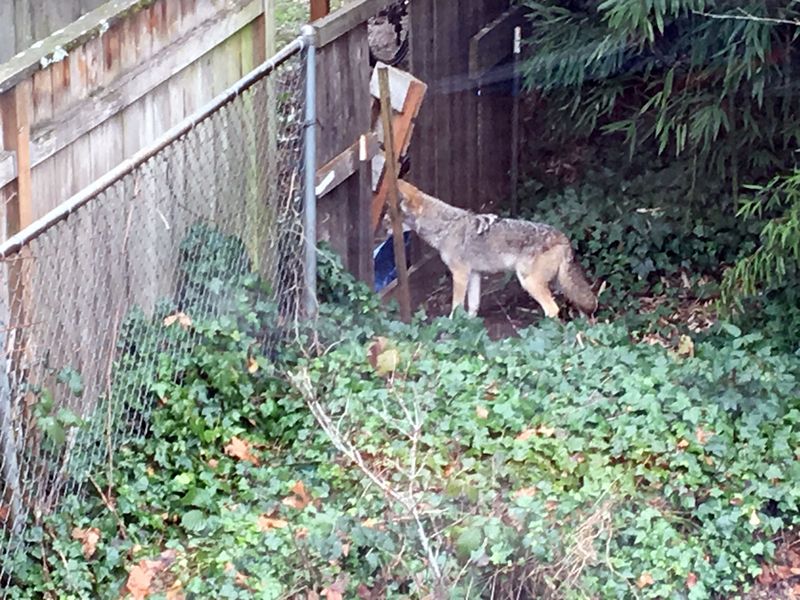
Coyotes have adapted well to urban environments, making their way into backyards across the US. They are intelligent and resourceful predators, known for hunting small animals and scavenging. While they rarely pose a direct threat to humans, they can be dangerous to pets.
To prevent encounters, avoid leaving pet food outside, and secure trash bins. Coyotes are most active during dawn and dusk. Installing motion-sensitive lighting can deter these animals from venturing too close to homes. Understanding their behavior helps in coexisting peacefully with these adaptable creatures.
Red Fox
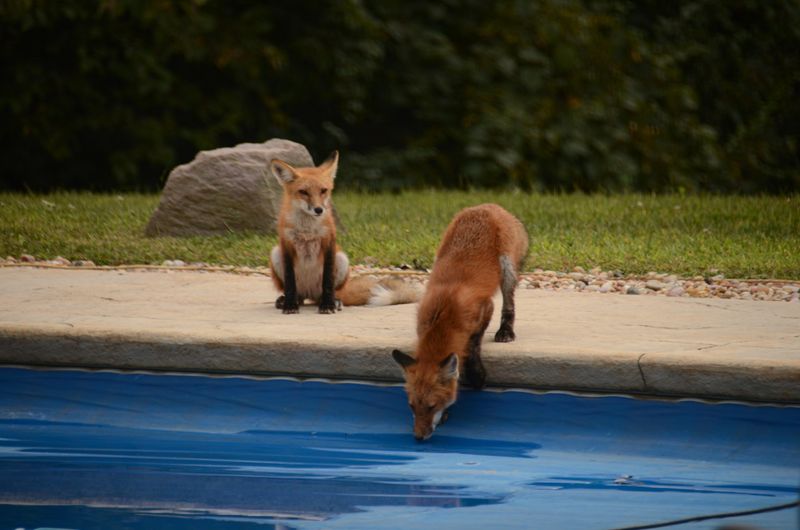
Red foxes are often seen darting through gardens and backyards in search of food. Their striking red fur and bushy tails make them easily recognizable. Though they tend to shy away from humans, they may prey on small pets and poultry.
To protect pets, ensure they are indoors or supervised. Secure poultry enclosures to prevent fox raids. These animals are excellent climbers and diggers. Understanding their natural behaviors and securing food sources can help reduce unwanted visits. Red foxes are fascinating animals, and with precautions, they can be appreciated from a distance.
Bobcat

Bobcats are elusive yet increasingly seen in suburban areas. Their spotted fur and tufted ears distinguish them from other wild cats. While they usually avoid people, bobcats are skilled hunters that pose a threat to pets.
To deter them, remove potential food sources and secure outdoor enclosures. Bobcats are most active during twilight, so keeping pets indoors during these times can prevent encounters. Motion-activated lights and cameras can help monitor their presence. Observing these solitary creatures from a safe distance can offer a glimpse into their mysterious world.
Striped Skunk
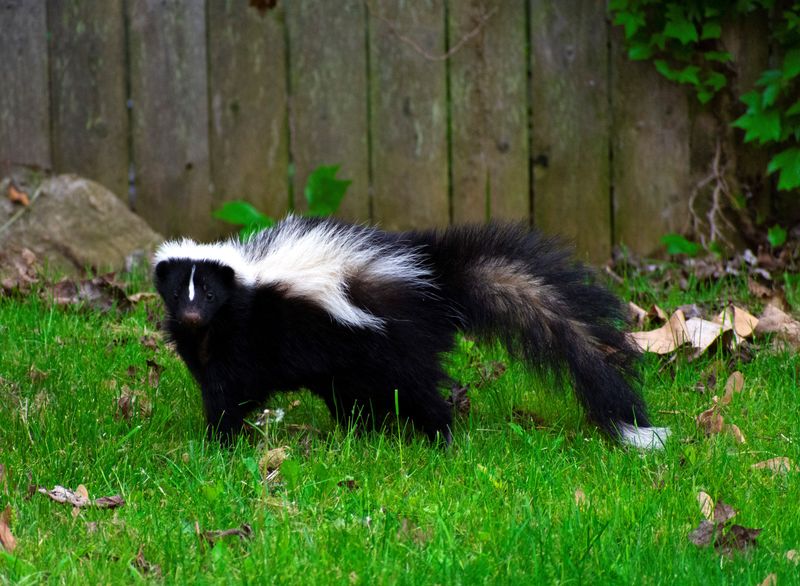
Striped skunks are common nocturnal visitors in backyards, often searching for food. Recognizable by their white stripes and pungent spray, they can be a smelly nuisance. Though not aggressive, they will spray if threatened, which can be harmful to pets.
To avoid attracting skunks, secure garbage and remove fallen fruit. Skunks dig for grubs, so managing lawn pests can deter them. If a skunk is spotted, keep pets indoors and allow the skunk to move along undisturbed. Appreciating them from afar helps maintain a harmonious coexistence.
Great Horned Owl
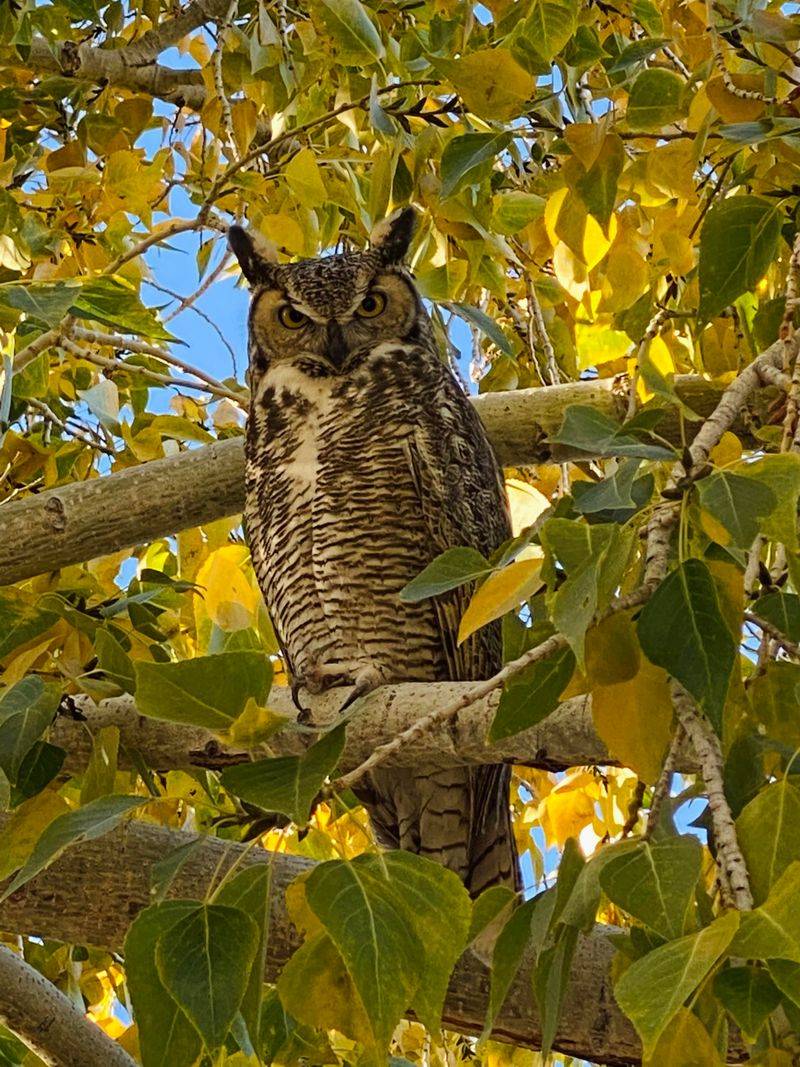
Great Horned Owls are majestic birds often found in suburban and rural backyards. Known for their tufted ears and deep hoots, these nocturnal predators hunt rodents and small animals. Though beautiful, they can pose a threat to pets left unattended at night.
To protect pets, keep them indoors during nighttime hours. Encouraging natural predators of rodents can reduce owl presence. These owls play a vital role in controlling pest populations. Observing them from a distance allows for a safe appreciation of their beauty and grace in the evening sky.
Eastern Coral Snake
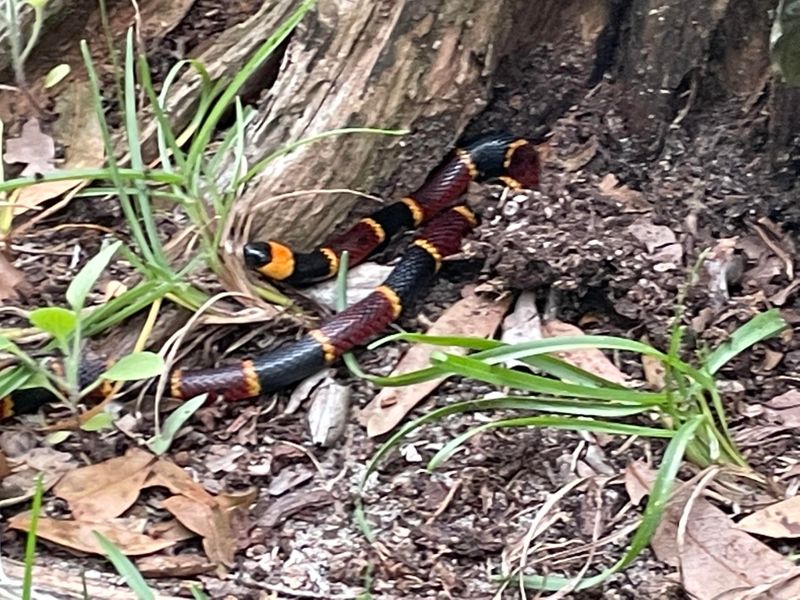
Eastern Coral Snakes are elusive and highly venomous reptiles that occasionally appear in southeastern US backyards. Recognizable by their red, yellow, and black bands, they carry potent venom that can be fatal. Despite their toxicity, coral snakes are shy and rarely bite unless handled.
If spotted, it’s best to leave them alone and contact professionals for removal. Educating family members about their appearance can prevent accidental encounters. Clearing debris and maintaining a tidy garden helps reduce hiding spots. Coral snakes are a reminder of the diverse wildlife inhabiting our surroundings.
Mountain Lion
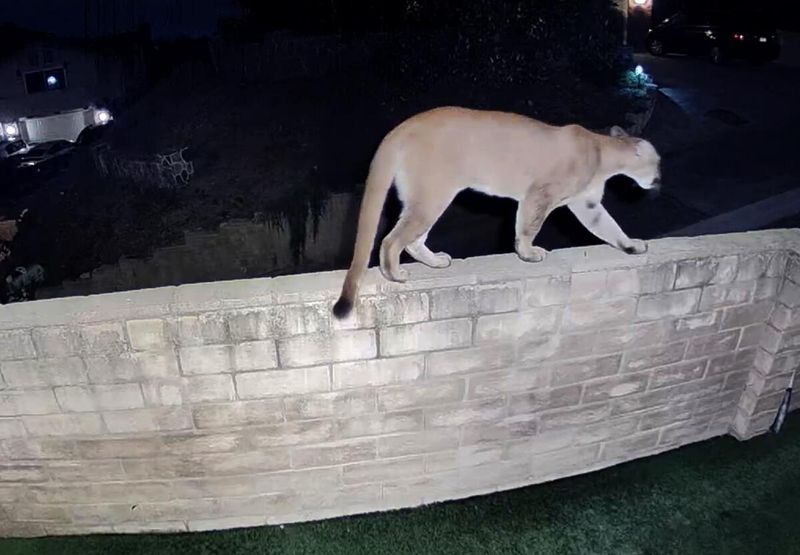
Mountain lions, also known as cougars, are formidable predators sometimes spotted near backyards adjacent to wilderness. Their stealth and strength make them effective hunters, primarily preying on deer. Though attacks on humans are rare, they can pose a threat to pets.
Securing outdoor spaces and keeping pets indoors from dusk to dawn can reduce risks. If a mountain lion is sighted, do not approach; instead, make noise to scare it away. Being aware of their presence and respecting their territory ensures safety. Witnessing these majestic creatures from a safe distance can be awe-inspiring.
Alligator
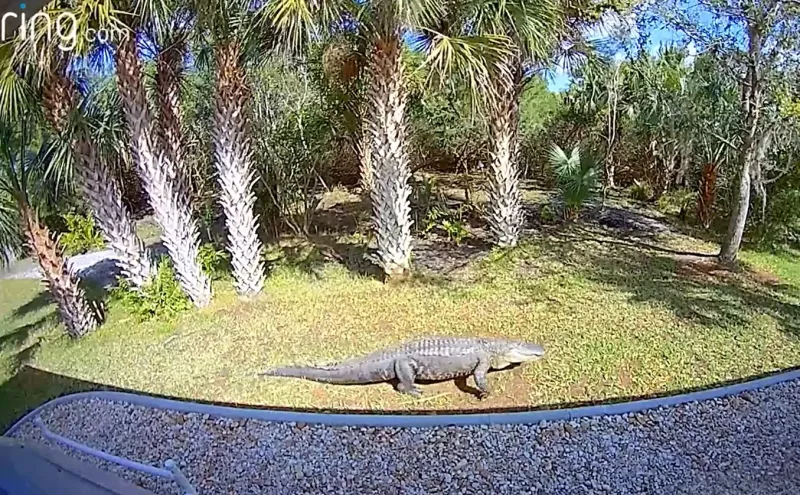
Alligators are often found in backyards near water bodies in the southeastern US. These reptiles are powerful and can be aggressive if provoked. While they primarily feed on fish and small mammals, they may become a threat if they lose their fear of humans.
To prevent alligator encounters, avoid feeding them and maintain a safe distance from water edges. Fencing around ponds and pools can deter them from entering yards. Understanding their behavior and respecting their space contributes to a safer coexistence. These ancient creatures are a fascinating part of the southern ecosystem.
Wild Boar
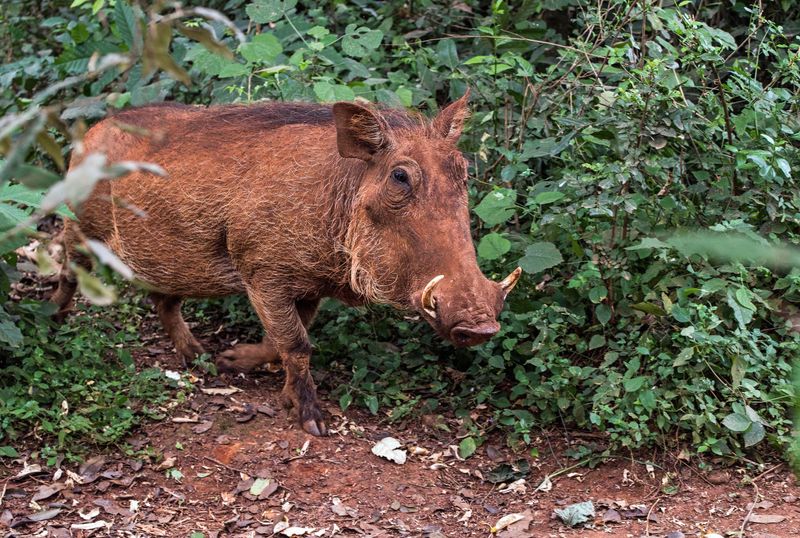
Wild boars are invasive animals found in some US backyards, especially in the southern states. Known for their tusks and aggressive behavior, they can cause significant damage to gardens and lawns. Their rooting habits destroy vegetation, and they may pose a threat to pets and people if cornered.
To deter boars, secure fences and remove food sources that attract them. Electric fencing can be effective in keeping them at bay. Being vigilant and prepared helps minimize the impact of these wild invaders. Wild boars are a reminder of the challenges posed by non-native species.
Copperhead Snake
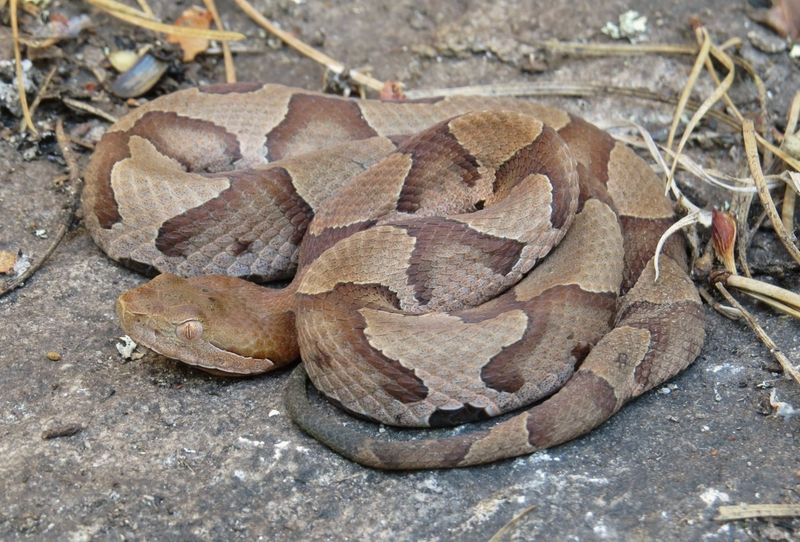
Copperhead snakes are venomous reptiles often found in wooded backyards throughout the eastern US. Their copper-colored heads and hourglass patterns allow them to blend with fallen leaves, making them hard to spot. While their bites are rarely fatal, they can cause significant pain and require medical attention.
Homeowners should watch their step and clear yard debris where snakes might hide. If bitten, seek immediate medical care. Understanding Copperhead behavior can prevent unfortunate encounters. These snakes play an important ecological role by controlling pest populations, contributing to a balanced environment.
Raccoon
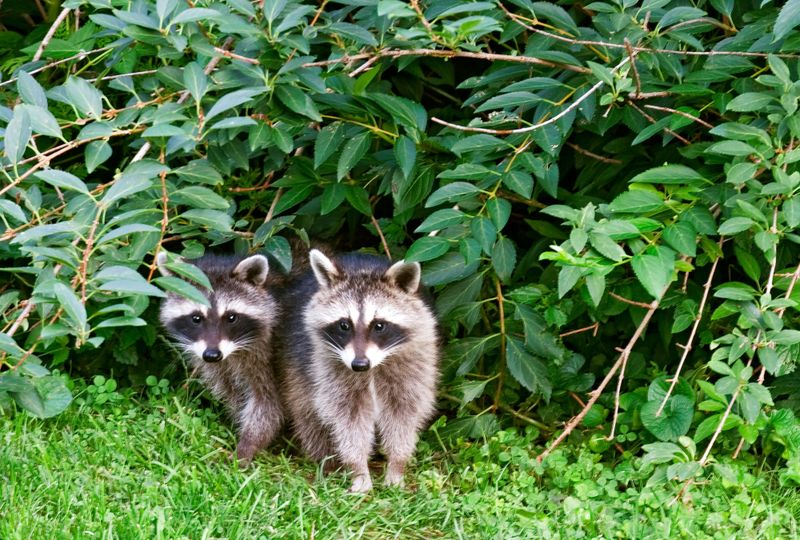
Raccoons are resourceful scavengers frequently seen in urban and suburban backyards. Recognizable by their masked faces and ringed tails, they often search for food in trash cans and gardens. While they appear cute, raccoons can carry diseases and may become aggressive if cornered.
To deter them, secure trash bins and close off entry points to attics or sheds. Installing motion-activated lights can also discourage nighttime visits. By understanding raccoon behavior and taking preventive measures, homeowners can reduce unwanted interactions. These clever creatures remind us of nature’s adaptability.
Eastern Box Turtle
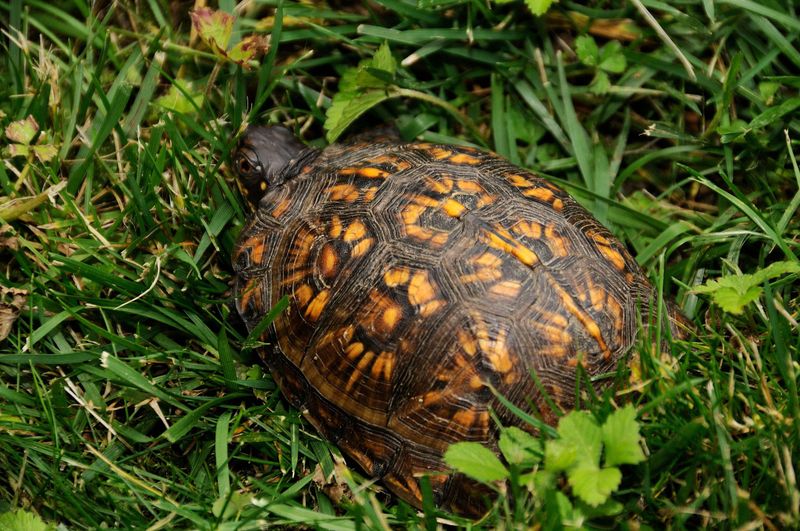
Eastern Box Turtles are gentle reptiles occasionally found wandering through backyards, especially in the eastern US. Recognizable by their domed shells and colorful patterns, they are generally harmless but fascinating to observe. These turtles prefer moist environments and often seek out gardens and shady spots.
While they pose no danger, they should be left undisturbed to ensure their safety. Creating a garden with native plants can provide a welcoming habitat for these turtles. Understanding and respecting their natural behaviors helps protect these important members of the ecosystem.
Brown Recluse Spider
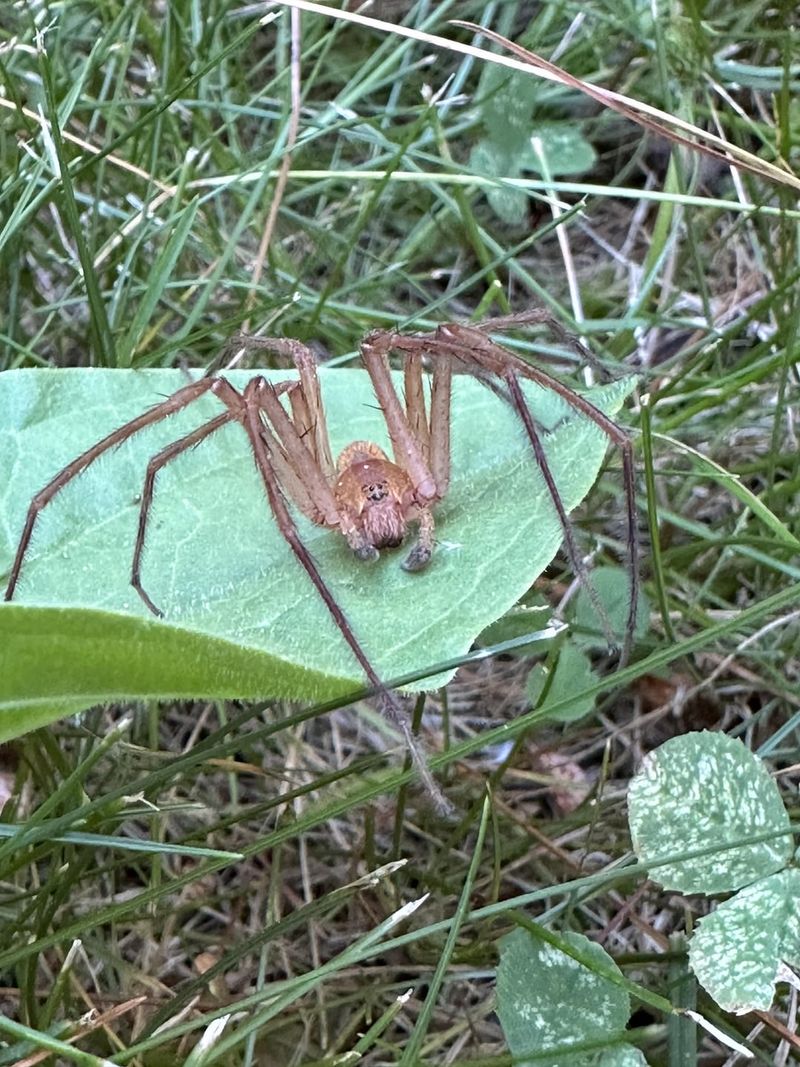
The Brown Recluse Spider is a venomous arachnid sometimes found in backyards, particularly in the southern and central US. Known for its violin-shaped marking, its bite can cause serious skin damage. These spiders prefer dark, undisturbed areas like sheds and woodpiles.
To prevent encounters, wear gloves when handling debris and keep outdoor structures tidy. If bitten, seek medical attention promptly. Recognizing their preferred habitats can reduce risks. These spiders contribute to controlling insect populations, highlighting the balance of nature’s web even in our backyards.
Gila Monster
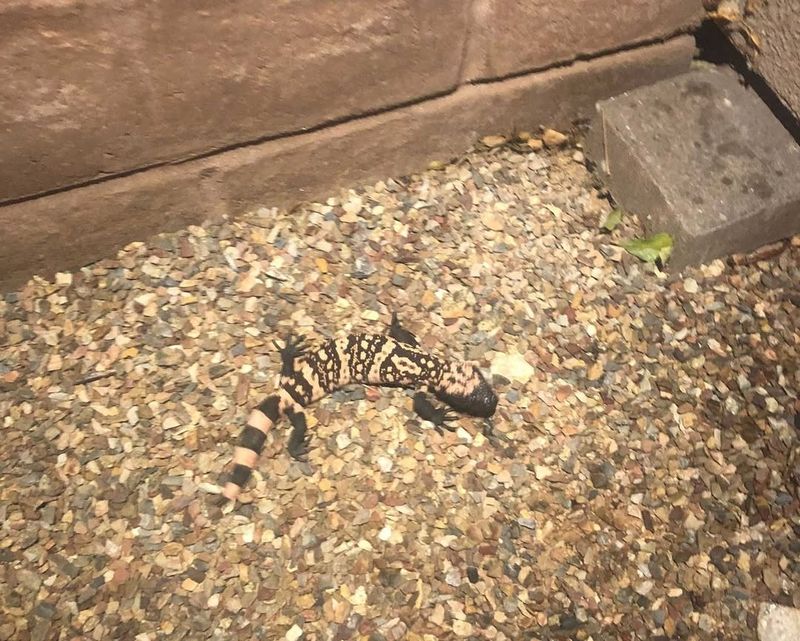
Gila Monsters are venomous lizards native to the southwestern US, occasionally found in backyards. Their striking orange and black skin serves as a warning of their toxicity. Though they rarely bite, their venom can cause severe discomfort.
These lizards are slow-moving and prefer desert-like environments. Homeowners should educate themselves and children to avoid handling them. Creating rock gardens that mimic their natural habitat can be a safe way to observe them. Gila Monsters remind us of the unique wildlife in desert regions, deserving admiration and respect.
Bald Eagle
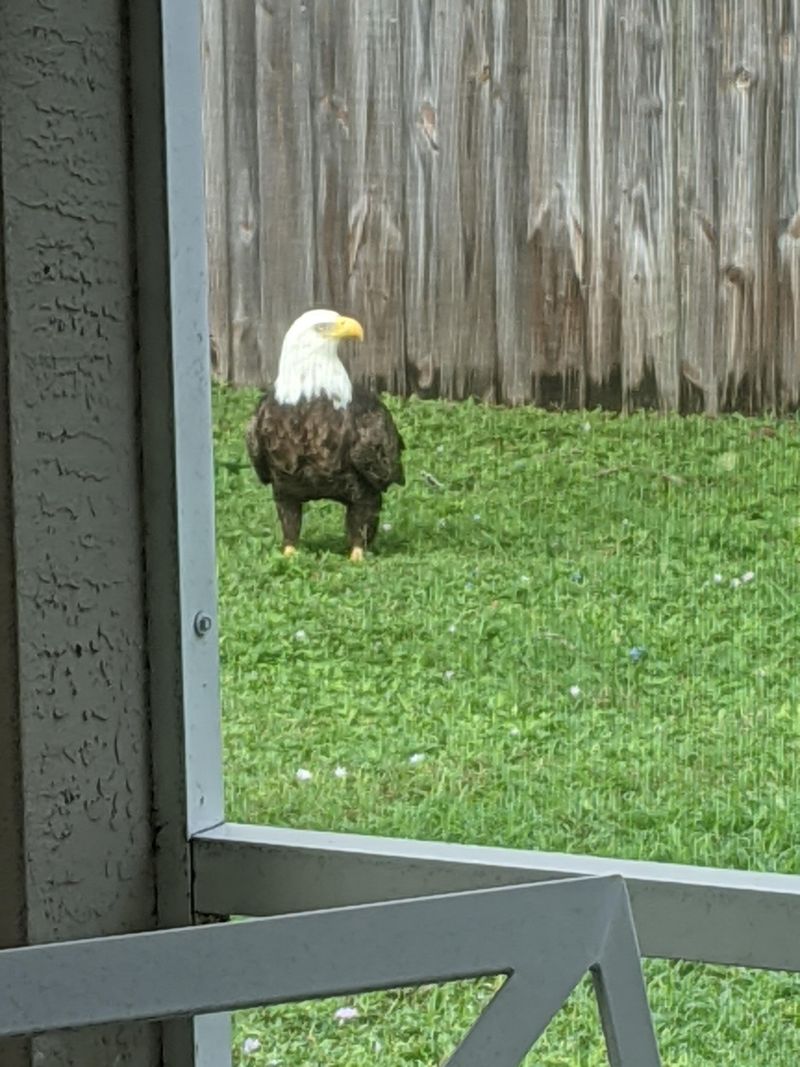
Bald Eagles, the iconic symbols of America, are often seen soaring above backyards near lakes and rivers. With their white head and powerful wingspan, they are impressive to watch. These birds of prey hunt fish and small mammals, sometimes posing a threat to pets.
To protect pets, supervise them when outdoors near eagle habitats. Observing these birds from a distance allows us to appreciate their grandeur without disturbing them. Bald Eagles play a key role in the ecosystem as top predators, embodying the wild beauty and freedom of the skies.
Wolverine
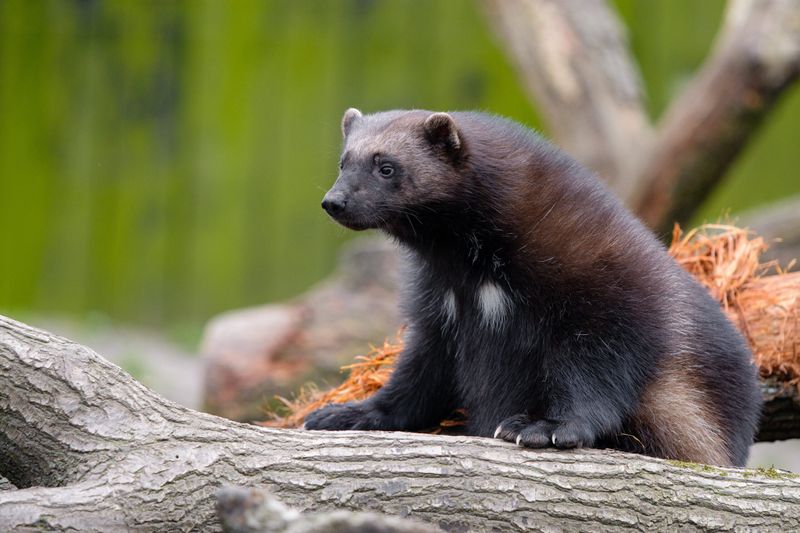
The wolverine, often found in remote northern forests, has occasionally been spotted in unexpected suburban backyards. This large mustelid is known for its powerful build and ferocious nature, capable of taking down prey much larger than itself.
Though rare, these sightings raise concerns due to their aggressive behavior. Wolverines are solitary creatures, typically avoiding human interaction, yet they become bold when their territory is threatened.
Spotting a wolverine in your backyard is a rare event. If you do, ensure not to approach. Instead, secure all food sources and inform local wildlife authorities.

